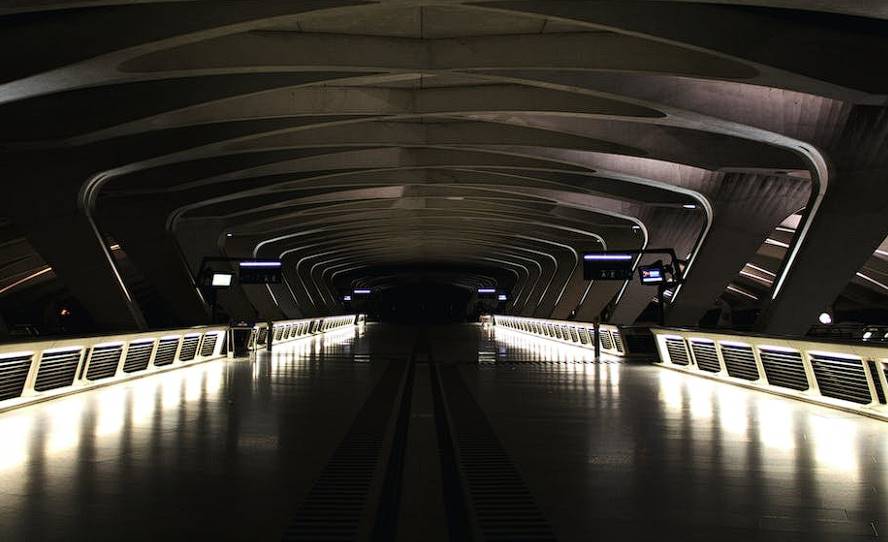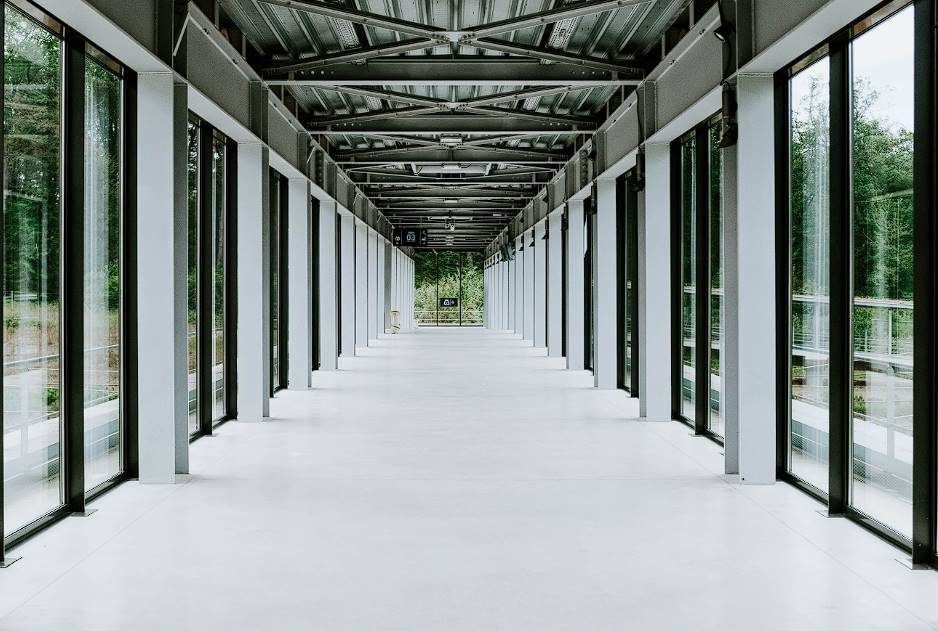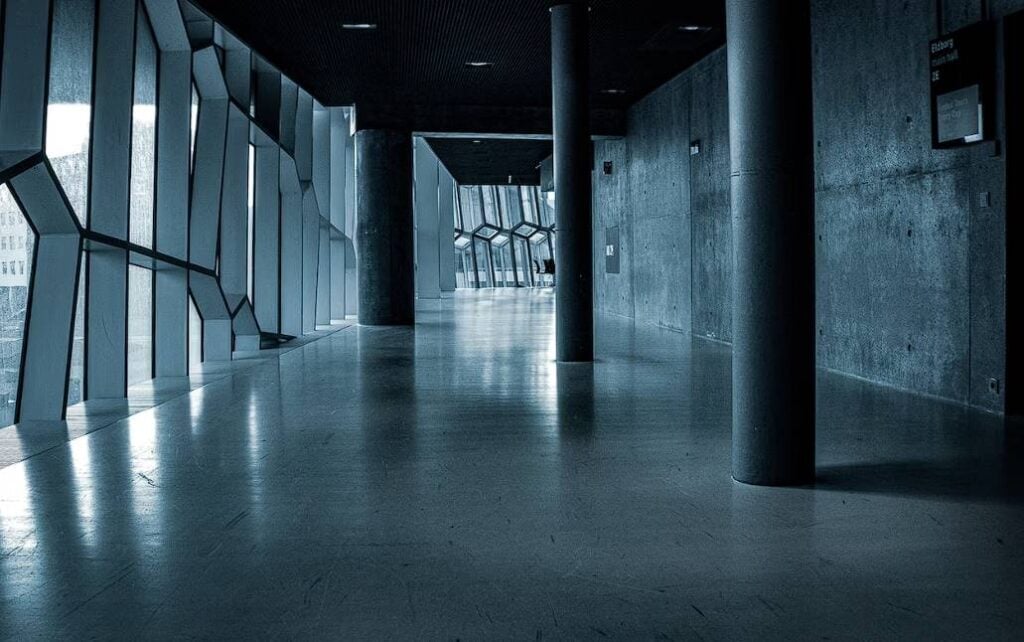Dampness often occurs in concrete floor slabs when there is a failure or absence of a Concrete floors are a popular choice for both residential and commercial buildings due to their durability and versatility. However, one common issue that can affect concrete floors is dampness. Dampness not only compromises the structural integrity of the floor but also creates an unhealthy environment, leading to mold and mildew growth. To protect your concrete floors and ensure their longevity, it is essential to implement effective damp proofing techniques.
Whether you are constructing a new building or renovating an existing one, understanding how to combat dampness in concrete floors will help you maintain a healthy and structurally sound environment. From identifying the causes of dampness to implementing preventive measures and remedial actions, we will cover everything you need to know.
Why is damp proofing crucial for concrete floors? When moisture infiltrates a concrete floor, it can lead to several issues such as deterioration of the concrete, damage to floor coverings, and the growth of mold and mildew. These problems not only compromise the aesthetics of your space but can also pose health risks to occupants. By implementing effective damp proofing techniques, you can prevent moisture intrusion, maintain the integrity of your concrete floors, and create a safe and comfortable environment.
We will also discuss the importance of moisture testing and how to identify signs of dampness in your concrete floors. Additionally, we will provide tips and recommendations for choosing the right materials and hiring professionals for the job.
Waterproofing Concrete Floors
While damp walls are commonly associated with damp problems, it's essential to be aware that dampness can also occur on concrete floors. This typically happens when the damp-proof membrane is either absent during the floor installation or has failed. Excessive moisture levels lead to water rising above the concrete layer, resulting in dampness.
Neglecting to damp-proof a concrete floor can have noticeable consequences, especially once a floor covering is placed on top. Carpets are susceptible to damage, and wooden floors are prone to warping. However, the repercussions go beyond surface damage. Damp concrete often fosters the growth of mould and mildew, which can spread to floor coverings and walls, causing a full-blown mould infestation if left untreated.
Given the potential problems, damp-proofing concrete floors should be noticed. The good news is that several methods are available to address this issue effectively.
Damp Proofing Concrete Floors With Liquid Membranes
A liquid-applied damp-proof membrane (DPM) is a simple and effective solution for damp-proofing a concrete floor. While it may seem unconventional to "paint" a concrete floor, it creates a highly durable and impenetrable barrier against moisture. This method is particularly suitable when the final surface of the concrete will be covered, such as with carpet or wood flooring.
The application of a liquid membrane offers several advantages. These products typically have excellent adhesive properties, ensuring a secure bond to the concrete surface. Additionally, they dry relatively quickly, allowing for efficient installation. In cases where the damp proofing solution is required for a basement, the same membrane is often applied to the walls simultaneously. This creates an airtight seal that effectively prevents moisture from permeating the space.
Preparing Concrete Floors with Liquid Epoxy DPM
The use of a liquid epoxy damp-proof membrane (DPM) is common in situations where an original DPM was either never placed or has degraded. This redolence and lack of solvents set this DPM variety apart from others. It has two distinct components. It's principal use is in efficiently dealing with the perennially low moisture levels found in concrete flooring.
Pouring an epoxy liquid barrier onto a concrete floor is an effective way to seal it against water penetration. Epoxy membranes, unlike plastic DPMs that lay on top of the slab, establish a barrier that keeps water from seeping through to the concrete below. This is very important since standing water can rise up and damage the DPM, as well as the flooring, baseboards, and wall finishes.
Damp Proofing Concrete Floors With A Plastic Membrane
A convenient option is to use a plastic membrane to effectively damp-proof concrete floors. This specialized plastic mesh sheet is designed to prevent moisture penetration. It is placed between the concrete and the underlay floor covering, creating a barrier against dampness. The plastic membrane is compatible with various floor coverings, allowing for flexibility in design choices. A drainage channel system is typically incorporated in below-ground installations to manage water effectively. This solution provides a practical and reliable method for protecting concrete floors from moisture-related issues.
DPM Floor Membrane above Concrete
If you're seeking a solution to address damp problems in concrete flooring, another option is to install a damp-proof membrane above the concrete surface. Slimline floor membranes are specifically designed for this purpose, effectively isolating the concrete slab from the flooring material above. This method offers a convenient and efficient way to cover medium to large concrete areas with a protective barrier against moisture. By implementing a damp-proof membrane, you can effectively mitigate damp issues and ensure the longevity and integrity of your flooring.
Damp in Basement Concrete Floors
A combination of waterproofing solutions is typically employed to address the issue of dampness and potential flooding in basements. Instead of relying on a single method, a comprehensive waterproofing design is necessary to treat the problem effectively.
A specialist in waterproofing design would assess the basement and develop a customized plan to tackle the dampness issue. Since basements and cellars are prone to water ingress, a cavity drain system is often preferred over a damp-proof membrane.
A cavity drainage system involves multiple components, including a cavity wall membrane, a perimeter drainage channel, and a sump and pump system. This system works by diverting water from the basement, preventing it from reaching the concrete floor. Managing moisture ingress through a cavity drainage system can significantly reduce the risk of water damage and dampness in the basement.
Why Does Concrete Get Damp?
Despite its many strengths, Concrete possesses a porous structure that allows moisture to pass through it. This means dampness can travel upwards and affect the floor above. While you may have encountered damp issues in a property you've acquired, it's important to note that changes in the surrounding landscape can also contribute to the moisture content of the ground and lead to dampness.
For instance, if vegetation or trees are removed from a garden area, it can alter the moisture levels in the soil. This change in moisture can potentially result in increased dampness within the property. It highlights the interconnectedness between the external environment and the potential impact on the moisture levels of concrete structures. Understanding these factors can help in addressing and mitigating damp issues effectively.
What Are Cavity Drainage Systems?
A cavity drainage system is designed to address water ingress issues in cellars and basements. These systems effectively protect these areas by utilizing various components such as drainage channels, membranes, and a sump chamber with a pump system.
The purpose of a cavity drainage system is to redirect water to a designated exit point within the building rather than allowing it to seep through the concrete flooring. This is crucial because concrete is a porous surface, and preventing moisture from reaching this point is essential to maintaining a dry and usable space.
To implement a cavity drainage system, it is recommended to consult with a professional who specializes in waterproofing solutions. Since each basement is unique and may present different challenges, the specific approach and components of the system will vary accordingly. By working with an expert, you can ensure that the most suitable and effective solution is tailored to your specific basement requirements.
A membrane designed to drain a cavity, how does it function?
When applied internally to basement walls and floors, a Cavity Drain Membrane functions as an efficient waterproofing system. It makes use of several different kinds of strong and flexible cavity membranes.
When compared to Type A Waterproofing, or "tanking," which seeks to stop water from getting into the basement at all costs, a Cavity Drain Membrane system actually allows water to seep into the basement walls before efficiently channelling it elsewhere.
When water penetrates a wall, the membrane acts as a barrier between the wall and itself, directing the water to a specific location. The water is collected and sent through a perimeter drainage channel that is set up to lead the water to a sump pump or other suitable drainage point.
After installing the Cavity Drain Membrane, you can safely finish the walls by dry lining or plastering to make your basement liveable again.
Using a Cavity Drain Membrane system, you can prevent costly structural damage and provide a more comfortable living space by managing water seepage in the basement.
Conclusion
The structural integrity of a building might be jeopardised and an unhealthy atmosphere created if the concrete flooring is damp. Implementing efficient damp proofing solutions is crucial for protecting and extending the life of concrete flooring. As such, this article offers advice on how to conduct a moisture test, as well as recommendations for the types of materials to use and the people to hire to do the work. When the damp-proof membrane is lacking or fails, the concrete floor can get moist. wetness-proofing a concrete subfloor prevents costly repairs to carpets and hardwood flooring caused by rising wetness.
Liquid-applied damp-proof membranes (DPMs) and liquid epoxy damp-proof membranes (DPMs) are two examples of the many options available for dealing with this problem. When it comes to dealing with the low moisture levels prevalent in concrete floors, nothing beats the efficiency of a liquid epoxy DPM, which has two separate components and dries quickly thanks to its exceptional adhesive characteristics. The best technique to prevent water damage to a concrete floor is to pour an epoxy liquid barrier over it. The use of a plastic membrane for damp proofing concrete floors is an easy and practical solution. Wetness on Basement Concrete Surfaces To prevent mould growth and water damage, many homeowners adopt a variety of waterproofing techniques.
Cavity Drain Systems incorporate a variety of components, including drainage channels, membranes, and a sump and pump system, to remedy water infiltration difficulties in underground spaces like cellars and basements. It's best to talk to an expert on waterproofing systems before installing a Cavity Drain Membrane system. Instead than allowing water to soak through the concrete floor, a Cavity Drain Membrane system channels it to an internal drain.The use of a liquid epoxy damp-proof membrane (DPM) is common in situations where an original DPM was either never placed or has degraded. This redolence and lack of solvents set this DPM variety apart from others. It has two distinct components. Its major use is in effectively controlling the low levels of moisture that are always present in concrete slab floors.
Pouring an epoxy liquid barrier onto a concrete floor is an effective way to seal it against water penetration. Epoxy membranes, unlike plastic DPMs that lay on top of the slab, establish a barrier that keeps water from seeping through to the concrete below. This is very important since standing water can rise up and damage the DPM, as well as the flooring, baseboards, and wall finishes.
Content Summary
- Concrete floors are popular for their durability and versatility but can be prone to dampness.
- Dampness in concrete floors compromises structural integrity and promotes mould growth.
- Effective damp-proofing techniques are essential to protect and maintain concrete floors.
- Moisture infiltration can lead to concrete deterioration, floor covering damage, and health risks.
- Moisture testing is important for identifying signs of dampness in concrete floors.
- Choosing the right materials and hiring professionals are crucial for damp proofing.
- Dampness can occur on concrete floors when the damp-proof membrane is absent or fails.
- Neglecting damp-proofing can lead to damage to carpets, warping of wooden floors, and mould infestation.
- Liquid-applied damp-proof membranes create a durable barrier against moisture on concrete floors.
- Liquid epoxy DPMs are effective for dealing with low moisture levels in concrete flooring.
- Epoxy membranes seal concrete against water penetration, preventing damage to flooring and finishes.
- Plastic membranes provide a practical and reliable solution for damp-proofing concrete floors.
- Plastic mesh sheets create a barrier between concrete and underlay floor covering.
- DPM floor membranes installed above concrete isolate the slab from the flooring material.
- Dampness and flooding in basements require a comprehensive waterproofing design.
- Cavity drain systems are preferred over damp-proof membranes for basements.
- Cavity drainage systems involve components like membranes, drainage channels, and sump pumps.
- Concrete's porous structure allows moisture to pass through, leading to dampness.
- Changes in the surrounding landscape can contribute to increased dampness in concrete structures.
- Understanding external factors helps address and mitigate damp issues effectively.
- Cavity drainage systems redirect water to prevent it from seeping through concrete flooring.
- Consulting with a professional is recommended for implementing a cavity drainage system.
- Different kinds of cavity membranes are used in an efficient waterproofing system.
- Cavity drain membranes allow water to seep into the basement before channelling it elsewhere.
- Membranes act as barriers, directing water to designated drainage points.
- Dry lining or plastering can be done after installing a cavity drain membrane.
- Cavity drain membranes prevent structural damage and create a comfortable living space.
- Damp-proofing concrete floors is crucial for maintaining a safe and healthy environment.
- Proper moisture testing and material selection are essential for effective damp-proofing.
- Hiring professionals ensures the right implementation of damp-proofing techniques.
Frequently Asked Questions
One of the most convenient methods to address damp issues in concrete floors is to utilise a plastic membrane. This consists of a specially designed plastic mesh sheet that acts as a barrier, preventing moisture from penetrating. The membrane is positioned between the concrete surface and the underlay or flooring material.
A damp-proof membrane serves the critical role of creating a waterproof barrier to prevent moisture from infiltrating your walls and floors. This membrane is a critical component of a damp-proof course, which helps to keep your property free from dampness. Not only does a damp-proof membrane provide adequate protection, but it is also a cost-effective solution for addressing moisture issues.
To ensure the long-term integrity of a concrete floor, it is crucial to install a vapour barrier beneath it. This barrier is a protective layer, preventing moisture from seeping into the concrete. By creating a barrier between the concrete and any potential moisture sources, such as the ground or a damp environment, the vapour barrier helps to maintain the structural stability and durability of the concrete floor. It is essential for mitigating moisture-related issues and ensuring the longevity of the concrete surface.
A DPC can prevent growing humidity in walls, but it cannot protect other parts of a structure, such as floors, from this problem. It's made that way on purpose to stop dampness from rising inside the walls. However, other than increased dampness, it does not deal with condensation or water infiltration issues.
To safeguard against these additional concerns, a damp-proof membrane (DPM) is necessary. A DPM is a barrier to prevent moisture penetration from below the ground or surrounding areas. It is instrumental in preventing damage caused by condensation and water ingress, which can affect walls, floors, and other parts of the building.
By combining a DPC and DPM, one can effectively tackle multiple sources of moisture, ensuring comprehensive protection against dampness and its associated problems throughout the entire structure.
A damp-proof membrane (DPM) is crucial in preventing moisture from infiltrating the internal walls and floors. Its primary function is to act as a barrier, safeguarding against various issues that can arise from moisture ingress. By effectively preventing moisture penetration, a DPM offers protection against a wide range of problems commonly associated with dampness.
These issues include visible signs of dampness, such as patches on walls and floors, as well as damage caused by salts, rot, and the growth of mould and mildew. Property owners can mitigate the detrimental effects of moisture by implementing a DPM, preserving the structure's integrity and maintaining a healthy indoor environment.
A damp-proof membrane is a vital measure in combating the negative consequences of moisture infiltration, ensuring the longevity and durability of the building while promoting a safe and comfortable living or working environment.







